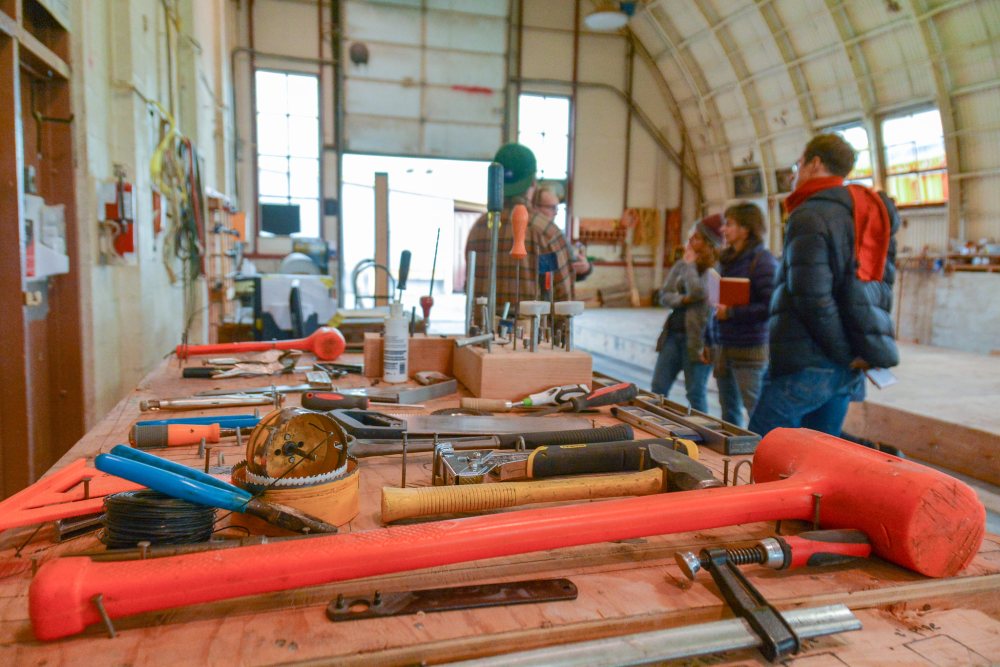As we do our part to flatten the curve on COVID-19, we’re spending much more time in our homes, juggling work with caring for and home-schooling kids, worrying about how to pay the bills, all while keeping our loved ones healthy, warm, fed and safe. With the exception of front-line and essential workers, we’re doing this day after day from within the same walls. And now that we’re home 24-7, we’re thinking more and differently about the roof over our heads. More of us are paying even closer attention to how we use energy in our homes and what that means for comfort and costs.
In the midst of a pandemic, we’re probably not thinking about the carbon pollution our homes emit. But we should — and we should consider how ramping down those emissions can help us rebuild Canada’s economy after the pandemic. Moving in this direction will create desperately needed jobs for workers while making our homes (and other buildings) more comfortable, ultra energy-efficient, low- to zero-carbon and resilient to increasingly frequent extreme weather worsened by climate change. The building sector is the third-biggest contributor to carbon pollution in Canada, accounting for 13 percent of emissions, according to the latest available data. Eliminating emissions from existing buildings by mid-century and ensuring that all new projects are designed and built for a low-carbon future are critical to meeting climate commitments and to making our homes healthier and safer.
Meeting these objectives calls for a nationwide infrastructure investment in the design, building and maintenance of climate-oriented upgrades to our houses, condos, apartment buildings, social housing and other buildings. These deep retrofits should aim to get buildings off fossil fuels, improve their energy efficiency and make them more resilient to climate impacts and even health crises like this one, because retrofitted buildings often have improved ventilation and air filtration, resulting in better air quality and a healthier living environment.
That’s not all. We must also fully integrate buildings with the power grid and equip them with technology that automates the balancing out of the peaks and valleys of electricity demand. In the not-too-distant low-carbon future, buildings will serve as sites for solar and wind power generation, and for energy storage with the technological capability to shift electricity consumption to off-peak times.
It’s a major undertaking, but it’s an area all of Canada’s major federal parties promised to act on in the lead-up to the last federal election. The Pembina Institute’s Green Stimulus package includes several recommendations for the federal government to promote the foundational role that homes and buildings can play in the post-pandemic economic recovery effort and in building future resilience.
Key measures include expanding a proposed plan for home energy retrofit incentives, mentioned in ministerial mandate letters, that includes up to $40,000 in interest-free loans and modest grants for homeowners. This program will generate more emissions reductions and economic activity if it offers higher loan maximums and more generous grants for retrofits resulting in low- or zero-emission homes. The government should broaden the program to include multi-unit residential buildings, create a dedicated channel of support for rental apartment owners and offer top-up incentives for non-profit housing societies and low-income households.
We recommend that the government create another top-up fund for retrofits and new construction projects funded through Canada’s National Housing Strategy (NHS) so that they can achieve deep carbon reductions. Right now, projects accessing NHS funding must achieve at least a 25 percent reduction in carbon pollution, a modest improvement that does not put these buildings on track for a low-carbon future nor meaningfully address their climate vulnerability.
Adding a top-up fund will enable non-profit housing societies to go directly to deep retrofits (emissions reductions of 60 to 80 percent) and to seize opportunities that would otherwise be missed for increased resiliency and economic activity from projects in the coming years.
We also recommend that the federal government increase the commercial retrofit rate by co-financing deep retrofits of public and commercial buildings. This could be achieved by instructing the Canada Infrastructure Bank to create a specific strategy for commercial energy retrofits and by endowing the “four long-term funds to help attract private capital that can be used for deep retrofits of large buildings” mentioned in the prime minister’s mandate letter to the minister of natural resources. Providing grants and financing for these retrofits will create jobs immediately and lower the risk to private sector capital at a time of reduced confidence.
This transition requires trained professionals, contractors and tradespeople who understand best practices for the design and construction of low-carbon buildings and deep retrofits. The current economic slowdown presents an opportunity for distance education programs to give workers the skills that are in high demand in the green building sector. Along with our colleagues at the Canada Green Building Council and Efficiency Canada, we recommend that the federal government provide $500 million for training the low-carbon building workforce.
As Canada rebuilds its economy in the wake of the COVID-19 pandemic, this job creation is imperative. Upgrading our existing homes and buildings is a multi-decade megaproject that, using existing programs and conduits for the flow of funds, can create economic activity in all regions of Canada while addressing housing and climate objectives. Deep retrofits make our buildings healthier, safer and more resilient. They are key to creating the clean electrical grid we need to decarbonize the rest of the economy.
By putting Canadians to work, lowering carbon emissions from our homes and other buildings and making them more energy efficient, safer and more comfortable, a national building deep-retrofit megaproject will benefit all Canadians. The time to invest is now.
This op-ed originally appeared in Policy Options on May 8, 2020.







